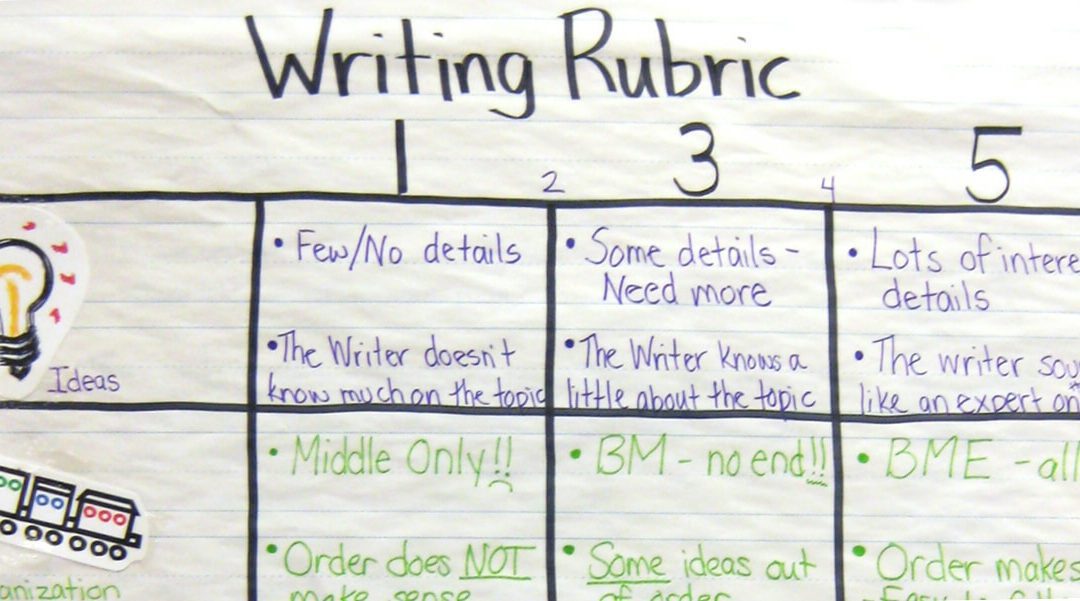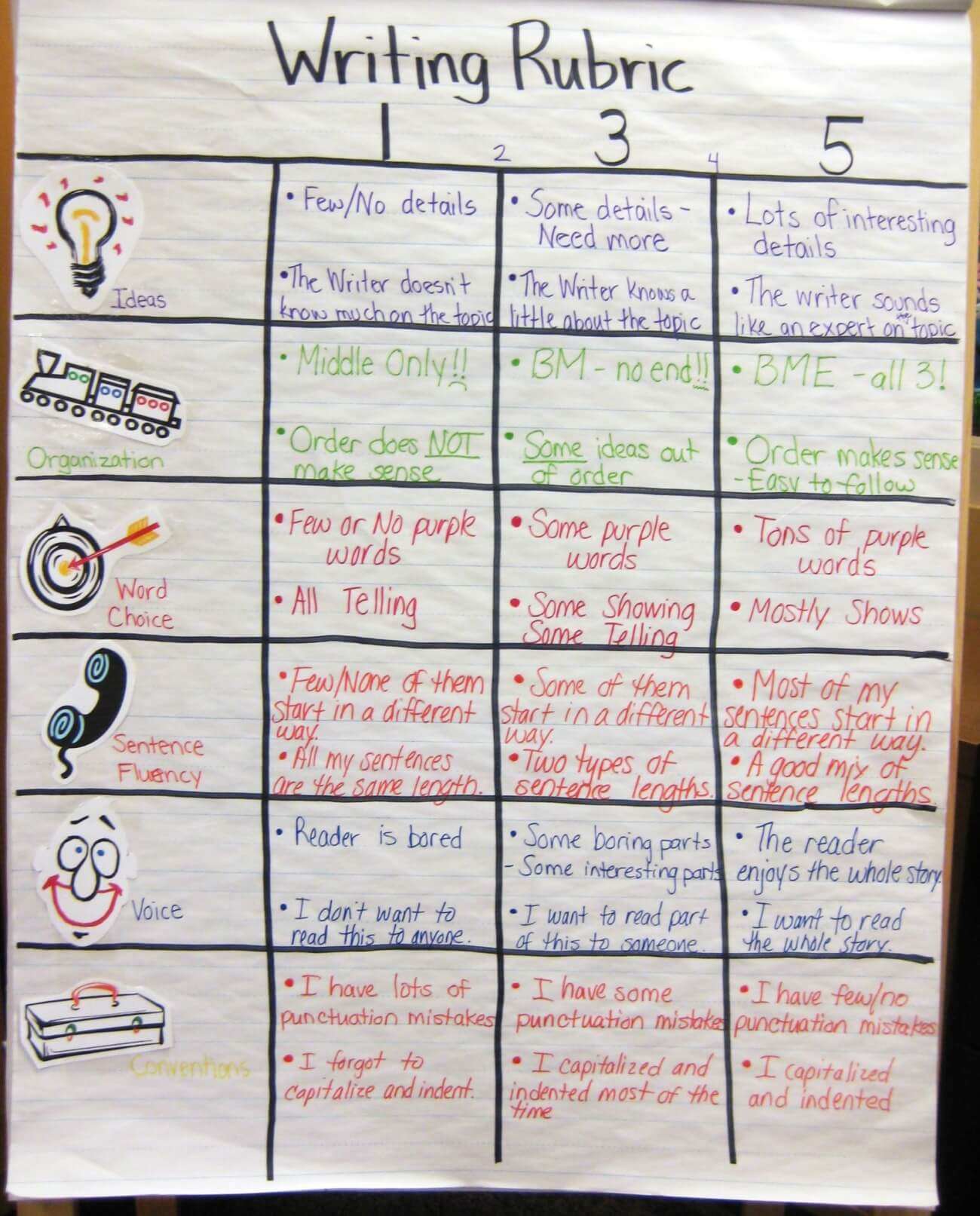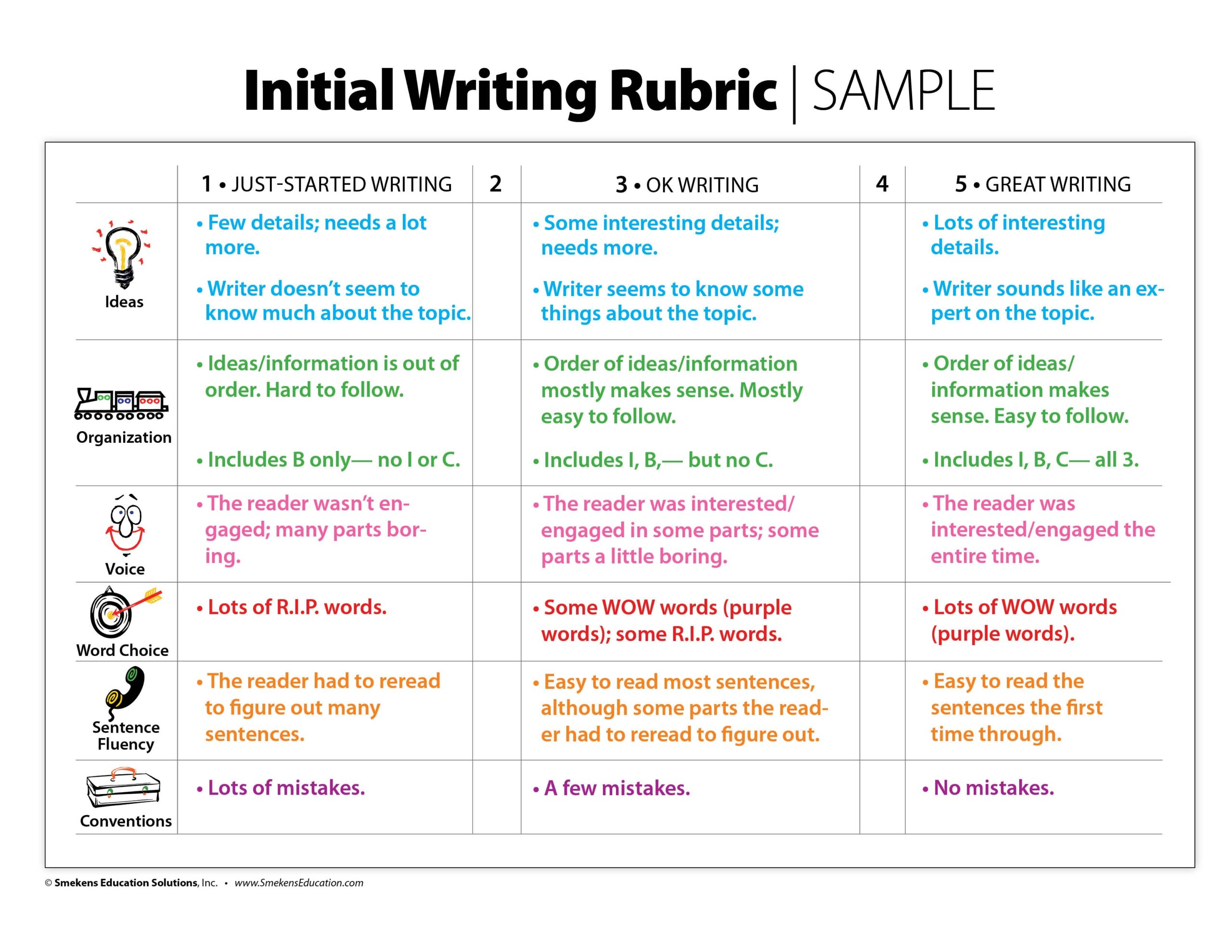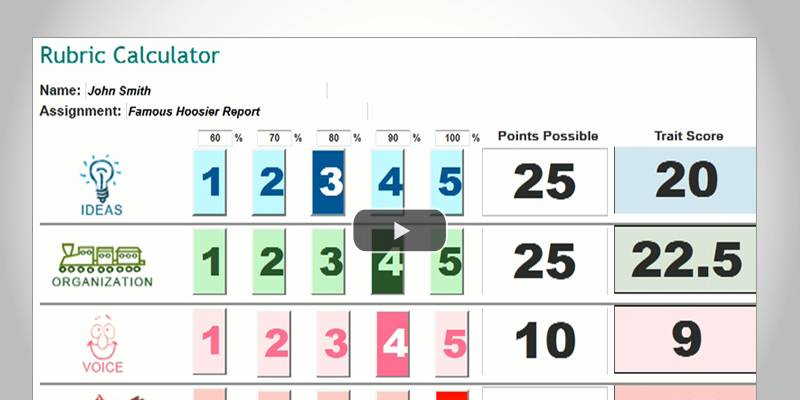Learning Center
Writing
Build & grow kid-friendly writing rubrics
december 8, 2023
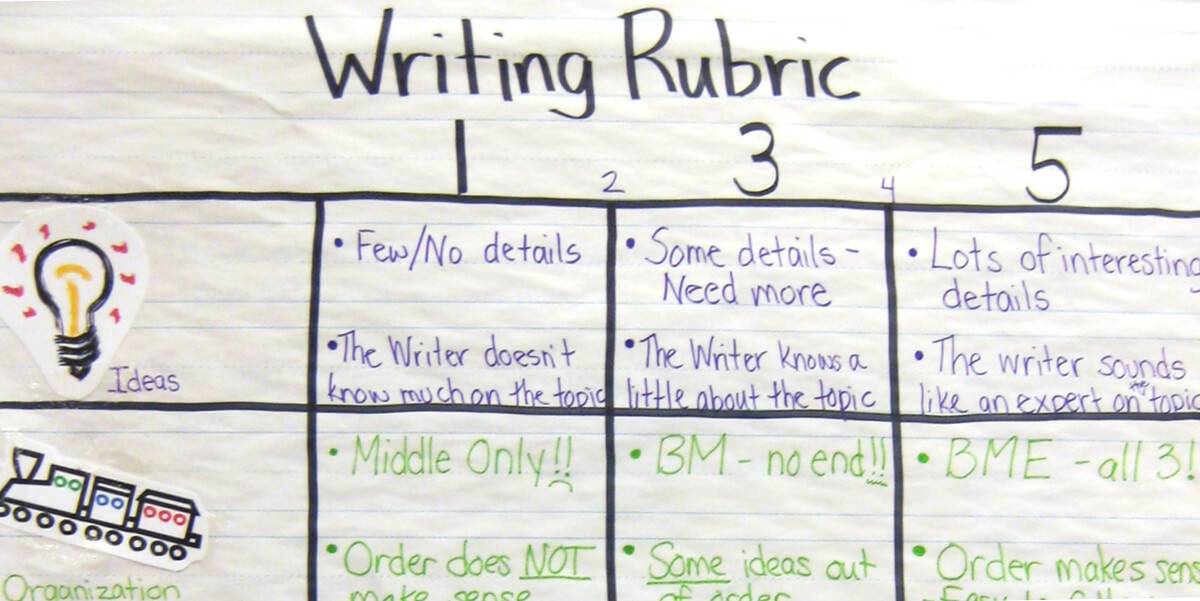
Build an initial writing rubric
When preparing for the rubric lesson, determine the format of this yearlong assessment tool. Some prefer that the rubric is visible within the physical classroom environment, while others are limited on space and prefer it is a digital resource only.
Access a digital template as a Word or Google Doc.
Once the format and space are determined, follow this process for building an analytic 6-Traits rubric with students.
- Using the six-traits language previously introduced, start with the description of a well-written product. Work together to list the criteria per trait you want to assess.
- Move to the middle column and label it “pretty good.” Be sure to parallel the same ingredients or components between the high and middle levels.
- Repeat this process a third time, describing each trait at a “just starting” level. (Even when describing the lowest level, always talk about what the anchor paper has and what the writer did. Keep this positive. Don’t label it as “bad” writing.)
- Since rubrics require a minimum of three described levels, stretch the ones you generated to represent Levels 1, 3, and 5.
- Conclude the lesson encouraging students to reference the Level 5 rubric criteria during writing time.
Update the writing rubric frequently
As new skills are taught, expectations should increase. “Up the ante” on the writing rubric.
Initially, the rubric criteria is general. It’s based only on a basic trait introduction. However, as mini-lessons are taught, those skills have to be added to the rubric. This typically occurs within a mini-lesson at the end of a mini-unit and when the end-of-unit product is announced.
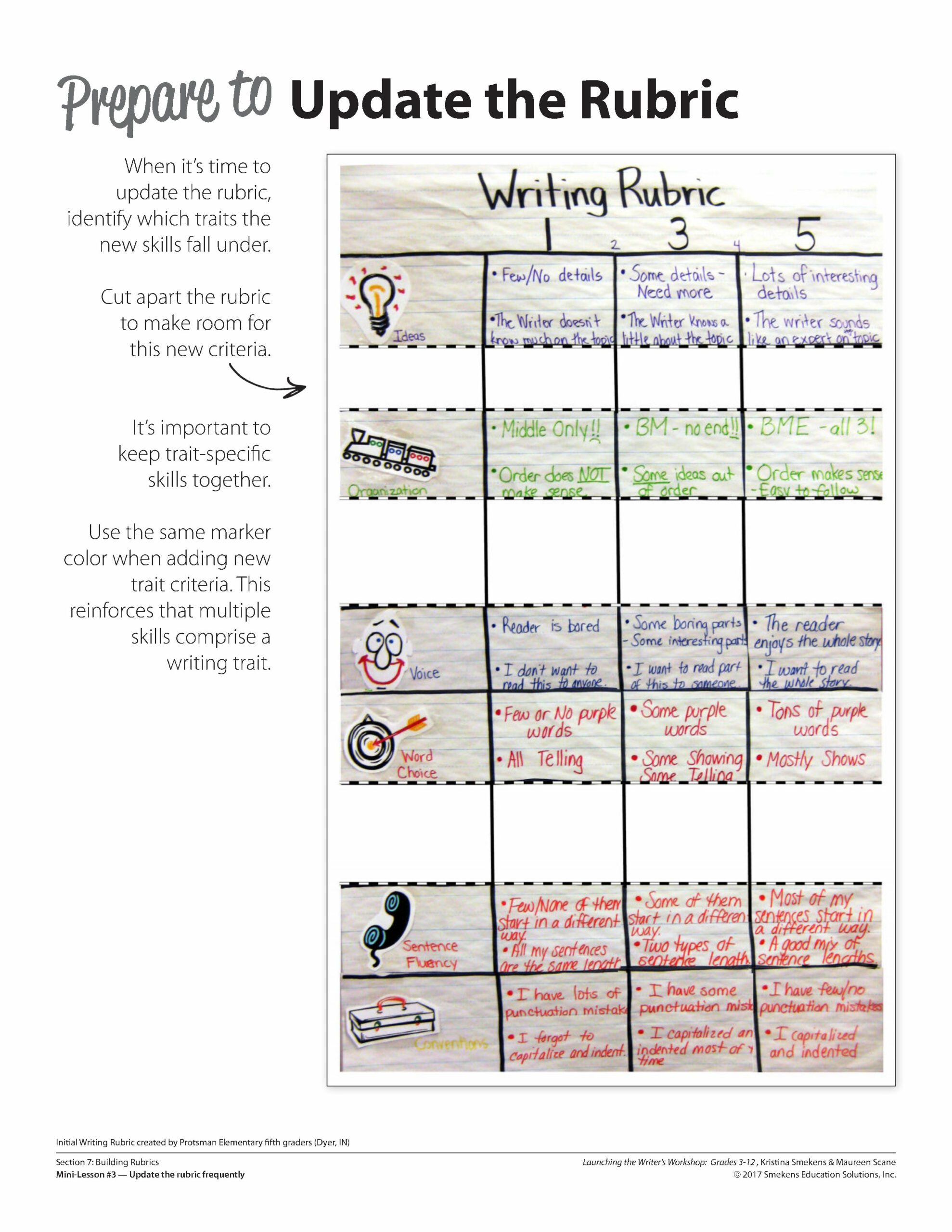 Such a mini-lesson might start like this: Today we will take a few minutes to update our rubric. There are skills we have learned that are not yet represented on our rubric. Identify one new skill and the trait it falls under. We learned that writers should select small, narrow, and manageable topics. That will help the trait of ideas. Let’s add that to the rubric. How should we word it?
Such a mini-lesson might start like this: Today we will take a few minutes to update our rubric. There are skills we have learned that are not yet represented on our rubric. Identify one new skill and the trait it falls under. We learned that writers should select small, narrow, and manageable topics. That will help the trait of ideas. Let’s add that to the rubric. How should we word it?
After composing the Level 5 criteria, then walk that skill down, describing that same skill executed at Levels 3 and 1. Continue this process until all recently learned skills have been added to the writing rubric.
If the rubric is written on chart paper, then literally cut apart the rubric and insert criteria, keeping all trait-specific skills together. This helps students see the related criteria per trait. If the kid-friendly rubric is digital, then simply project it as you collaboratively add criteria to the cells of the table.
 Ready to learn more about the 6 Traits?
Ready to learn more about the 6 Traits?
Enroll in a Smekens workshop on the 6 Traits of Writing to unlock the power of the Traits for your writing instruction.

Ready to learn more about the 6 Traits?
Enroll in a Smekens workshop on the 6 Traits of Writing to unlock the power of the Traits for your writing instruction.

